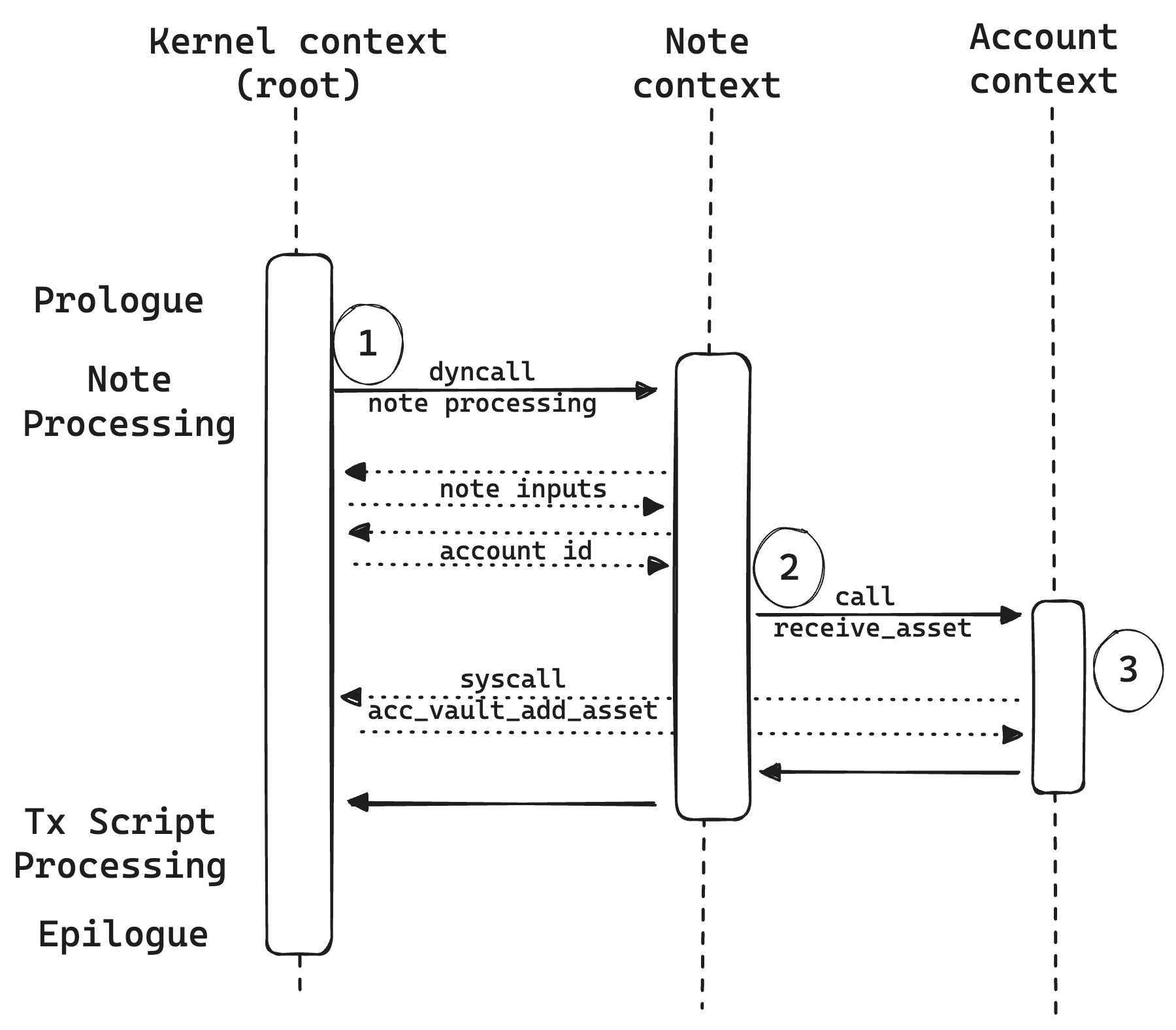Transaction contexts
Context overview¶
Miden assembly program execution, the code the transaction kernel runs, spans multiple isolated contexts. An execution context defines its own memory space which is inaccessible from other execution contexts. Note scripts cannot directly write to account data which should only be possible if the account exposes relevant functions.
Specific contexts¶
The kernel program always starts executing from a root context. Thus, the prologue sets the memory for the root context. To move execution into a different context, the kernel invokes a procedure using the call or dyncall instruction. In fact, any time the kernel invokes a procedure using the call instruction, it executes in a new context.
While executing in a note, account, or tx script context, the kernel executes some procedures in the kernel context, which is where all necessary information was stored during the prologue. The kernel switches context via the syscall instruction. The set of procedures invoked via the syscall instruction is limited by the transaction kernel API. When the procedure called via syscall returns, execution moves back to the note, account, or tx script where it was invoked.
Context switches¶

The above diagram shows different context switches in a simple transaction. In this example, an account consumes a P2ID note and receives the asset into its vault. As with any MASM program, the transaction kernel program starts in the root context. It executes the prologue and stores all necessary information into the root memory.
The next step, note processing, starts with a dyncall which invokes the note script. This command moves execution into a different context (1). In this new context, the note has no access to the kernel memory. After a successful ID check, which changes back to the kernel context twice to get the note inputs and the account id, the script executes the add_note_assets_to_account procedure.
# Pay-to-ID script: adds all assets from the note to the account, assuming ID of the account
# matches target account ID specified by the note inputs.
# ...
begin
... <check correct ID>
exec.add_note_assets_to_account
# => [...]
end
The procedure cannot simply add assets to the account, because it is executed in a note context. Therefore, it needs to call the account interface. This moves execution into a second context - account context - isolated from the note context (2).
#! Helper procedure to add all assets of a note to an account.
#! ...
proc.add_note_assets_to_account
...
while.true
...
# load the asset and add it to the account
mem_loadw call.wallet::receive_asset
# => [ASSET, ptr, end_ptr, ...]
...
end
...
end
The wallet smart contract provides an interface that accounts use to receive and send assets. In this new context, the wallet calls the add_asset procedure of the account API.
export.receive_asset
exec.account::add_asset
...
end
The account API exposes procedures to manage accounts. This particular procedure that was called by the wallet invokes a syscall to return back to the root context (3), where the account vault is stored in memory (see prologue). syscall can incoke all procedures defined in the Kernel API.
#! Add the specified asset to the vault.
#! ...
export.add_asset
syscall.account_vault_add_asset
end
Now, the asset can be safely added to the vault within the kernel context, and the note can be successfully processed.